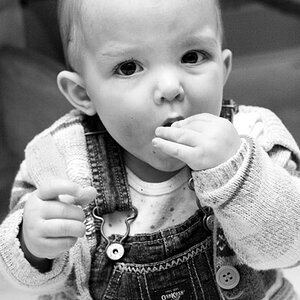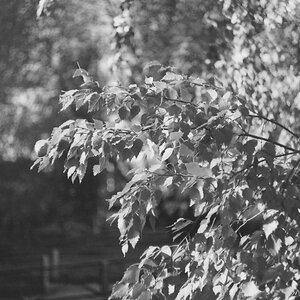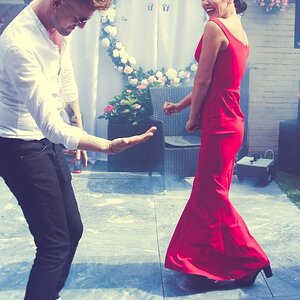cathexis
TPF Noob!
- Joined
- Oct 8, 2017
- Messages
- 39
- Reaction score
- 7
- Can others edit my Photos
- Photos OK to edit
Greetings All,
I'm a newbie to this forum but not to forums in general. Back in the 70's/80's (yes, it's been that long) my "outfit" was a used Miranda Sensorex and an even older Yashica 2 1/4" fixed lens reflex. Both were great and got lots of use, mainly in still life outdoor shots where I would use the variability of the Miranda on both f-stop, shutter speed, and ISO (as well as filters) to make "creative" shots. I always bracketed my shots so to save printing costs, I'd even shoot contact prints in the bathroom, flicking the 60W on/off as fast I could. Hey, it worked! But now I have only a Fuji S1800 Finepix which is WAY not able to recreate the shots I want. For example, the Fuji offers an A for aperture mode and a M for manual mode but actually the only choices for f-stop are 3.1 & 6.4, IIRC. I want to ask the group whether modern DSLR's can even do certain shots and if so what are some model ideas. Interchangeable lens are a must but it is the variability in f-stop & shutter speed settings that are crucial. No interest in flash, natural light only. The more it can do in B&W the better. I'm less interested in learning Photo-Shop Pro and such than in having a camera that I can take in field and do those things - in the field. But getting this level of camera specs. has been very hard; The Fuji for example, makes it very clear it has a "Manual & Custom modes" - but the devil is in the details!
Here are 2 examples of simple shots that I'd want to recreate and ask your suggestions on:
1. Simple low-profile up at tree with dramatic clouds in background using red filter in B&W.
2. Woodsy low-profile in dim, dappled sunlight shooting across a running brook in B&W where the f-stop is opened way up for the dim light. Shutter speed is also lowered so although the vegetation is in focus, the brook is blurred so to show it "running." Also B&W. The low f-stop will also soften the background and the shot would be bracketed to vary light levels, depth-of-field, and creek "blur."
Possible in today's world or not? I know Miranda's are cheap on E-bay, etc. but can modern DLSR's do this kind a stuff and what are some suggested models.
TIA ,
Cathexis
I'm a newbie to this forum but not to forums in general. Back in the 70's/80's (yes, it's been that long) my "outfit" was a used Miranda Sensorex and an even older Yashica 2 1/4" fixed lens reflex. Both were great and got lots of use, mainly in still life outdoor shots where I would use the variability of the Miranda on both f-stop, shutter speed, and ISO (as well as filters) to make "creative" shots. I always bracketed my shots so to save printing costs, I'd even shoot contact prints in the bathroom, flicking the 60W on/off as fast I could. Hey, it worked! But now I have only a Fuji S1800 Finepix which is WAY not able to recreate the shots I want. For example, the Fuji offers an A for aperture mode and a M for manual mode but actually the only choices for f-stop are 3.1 & 6.4, IIRC. I want to ask the group whether modern DSLR's can even do certain shots and if so what are some model ideas. Interchangeable lens are a must but it is the variability in f-stop & shutter speed settings that are crucial. No interest in flash, natural light only. The more it can do in B&W the better. I'm less interested in learning Photo-Shop Pro and such than in having a camera that I can take in field and do those things - in the field. But getting this level of camera specs. has been very hard; The Fuji for example, makes it very clear it has a "Manual & Custom modes" - but the devil is in the details!
Here are 2 examples of simple shots that I'd want to recreate and ask your suggestions on:
1. Simple low-profile up at tree with dramatic clouds in background using red filter in B&W.
2. Woodsy low-profile in dim, dappled sunlight shooting across a running brook in B&W where the f-stop is opened way up for the dim light. Shutter speed is also lowered so although the vegetation is in focus, the brook is blurred so to show it "running." Also B&W. The low f-stop will also soften the background and the shot would be bracketed to vary light levels, depth-of-field, and creek "blur."
Possible in today's world or not? I know Miranda's are cheap on E-bay, etc. but can modern DLSR's do this kind a stuff and what are some suggested models.
TIA ,
Cathexis


 I can't add much to the above, but it's cool to know there is another Miranda user out there!!!
I can't add much to the above, but it's cool to know there is another Miranda user out there!!!
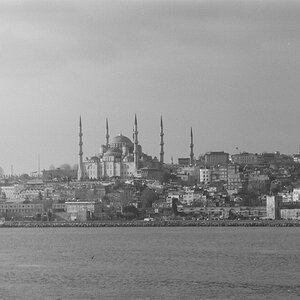
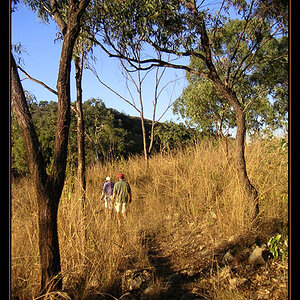
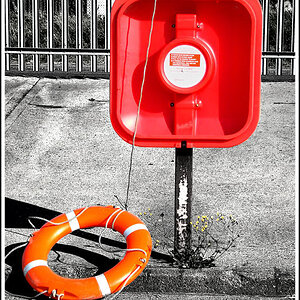
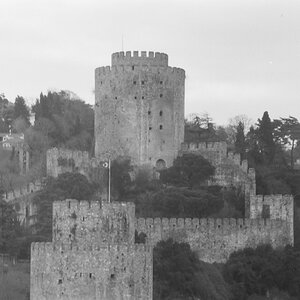
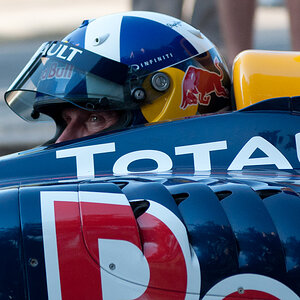
![[No title]](/data/xfmg/thumbnail/34/34146-9d096c80a1d288ea11e1f171a226bc3c.jpg?1619736319)
![[No title]](/data/xfmg/thumbnail/38/38263-ad5e4c9e677626ddb5b1e7cdf9ebe40e.jpg?1619738548)
